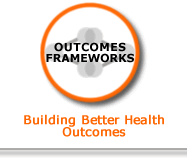Activities to develop the relevant competencies (to be defined by, for instance, local need, national and professional guidelines) should include different service provider staff in contact with individuals with work-related health issues and be delivered on an ongoing basis, and will contribute to the intended outcomes by enabling them to provide appropriate, timely advice, guidance and referral where necessary.
Rationale
Sources
Rationale
Ongoing development (e.g. with training, continued professional development and induction processes, or by making this a part of routine assessments) of the relevant competencies of service provider staff will contribute to improved knowledge and understanding of their own and others’ contribution to supporting health and work issues, and increased numbers of service provider staff that are skilled and motivated to support people to return to and/or remain in work and well. It must also be recognised that this activity is dependent on local decisions around use of resources and priorities for training based on local need, and upon the capacity of services and staff to deliver in this field (e.g. staffing levels and workforce planning, allocation of workloads)
NICE public health guidance 06 Behaviour change at population, community an individual levels sets out generic principles and recommended actions to guide the planning, development and delivery of public health activities to change health related behaviour.[1] This includes the provision of training and support for those involved in changing people’s health-related behaviour so that they can develop the full range of competencies required. NHS Health Scotland Commentary supported these recommendations with the following qualification.[2] The target audience referred to covers a wide range of professions with differing levels of engagement with initiatives to change behaviour, and accordingly necessary levels of competencies are likely to vary amongst the target groups.
Sources
-
NICE (2007). NICE public health guidance 06 Behaviour change at population, community and individual levels. NICE: London.
-
NHS Health Scotland (2007). Health Scotland Commentary on NICE Public Health Guidance: Behaviour change at population, community and individual levels. NHS Health Scotland: Edinburgh.
-
NHS Education for Scotland (2008). Getting Vocational Rehabilitation Working for Scotland: Education Needs of Staff Supporting Vocational Rehabilitation. A Discussion Document. NHS Education for Scotland: Edinburgh.
-
Frain MP, Ferrin JM, Rosenthal DA, Wampold BE. (2006). A Meta-Analysis of rehabilitation outcomes based on education level of the counsellor. Journal of Rehabilitation, 72(1): 10–18.
-
Hassan E, Austin C, Celia C et al (2009). Health and Wellbeing at Work in the United Kingdom. Report prepared by the Work Foundation for the Department of Health..
-
Boorman S (2009). NHS Health and Well-being. Final Report. Department of Health: London.
|



